Nuances of caring for red currants in autumn
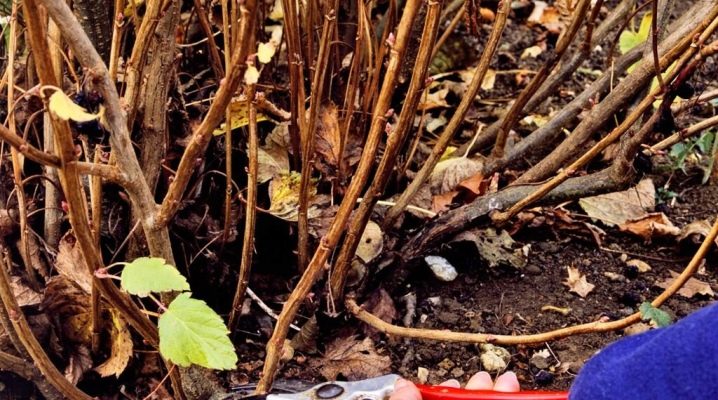
Currant is considered a conditionally unpretentious horticultural crop. That is why it is so widespread. But still, you should not completely abandon the bush to the mercy of fate. Each season the plant needs care, different seasons of the year - different scenarios of care. In the fall, care will consist of soil preparation, watering, pruning, pest control and minor additional procedures.
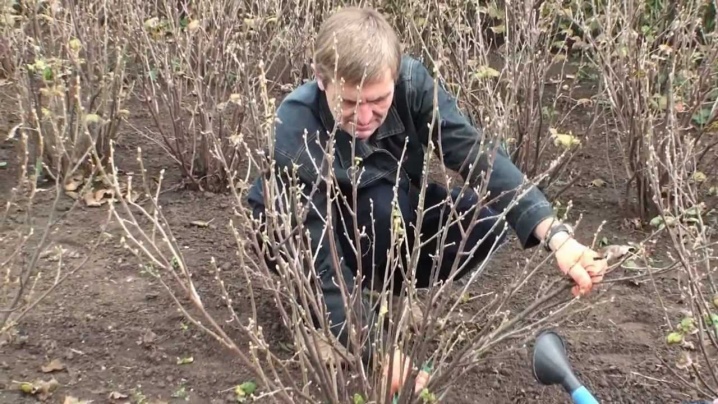
When to start preparing for winter?
In the fall, the garden is cleaned, prepared for wintering, which requires special attention. Because it is important not to leave pests and diseases on the site, cover the plants if necessary, feed them. With proper care, the shrub will definitely live for 20 years, and maybe more.
It is important to observe the timing of care, because if you start too early, the plant can be exposed to an undesirable effect of the greenhouse effect. Frosts in autumn are nevertheless often replaced by warmth, therefore, it is definitely not worth rushing, for example, with shelter. It is important to follow the weather forecast, to wait for a more serious, thorough cooling.
For example, you can install covering supports and tie the bushes as soon as the ground is covered with a crust of ice, snow, and the soil is unlikely to thaw.
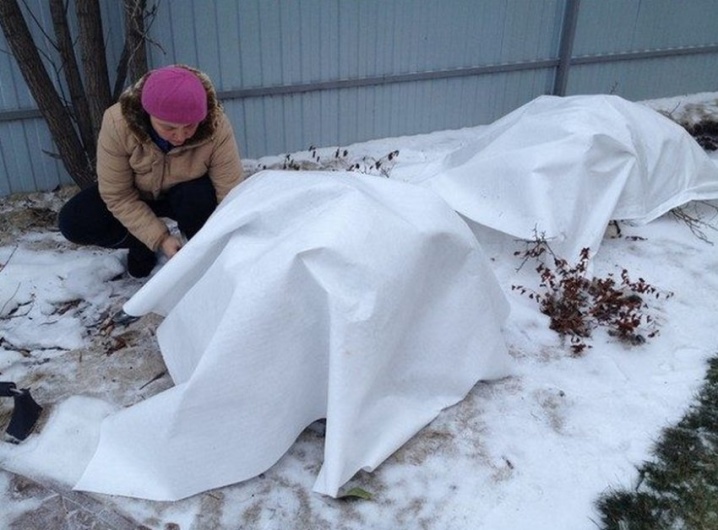
Watering
Pre-winter watering should always be, even if the autumn turned out to be rainy. Currants do not like arid conditions, therefore, its roots will need a supply of moisture. And this moisture will also help her to endure the winter more easily. Currant root growth occurs in September, and watering this month will be most effective.
It should be plentiful, with 3 to 5 buckets of water under each bush. The soil should be moistened about half a meter deep. After watering, the formed near-stem circle will need to be mulched. For this, peat or sawdust will do. The mulching layer can reach 10 cm, the radius of the trunk circle is 60 cm.
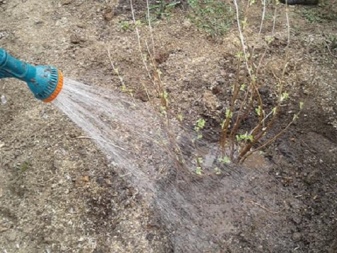
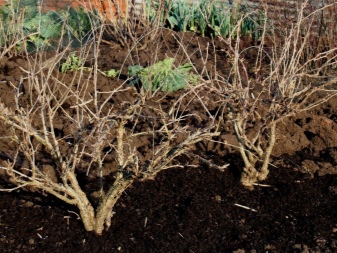
What and how to feed?
The soil around the plant in the fall is dug up about 10-15 centimeters, while the currant roots must be tried not to touch. And at the same time, fertilizer can be applied to the soil. The main fertilizer will be superphosphate, which is applied in 1-2 tablespoons per bush. The superphosphate should penetrate 10 cm deep into the soil. It is within the radius of the formed near-trunk circle.
What is this top dressing for: plants better resist fungal infections, frost. This will reduce the work of red currants for recovery already in the new year. And this gives chances for a new bloom.
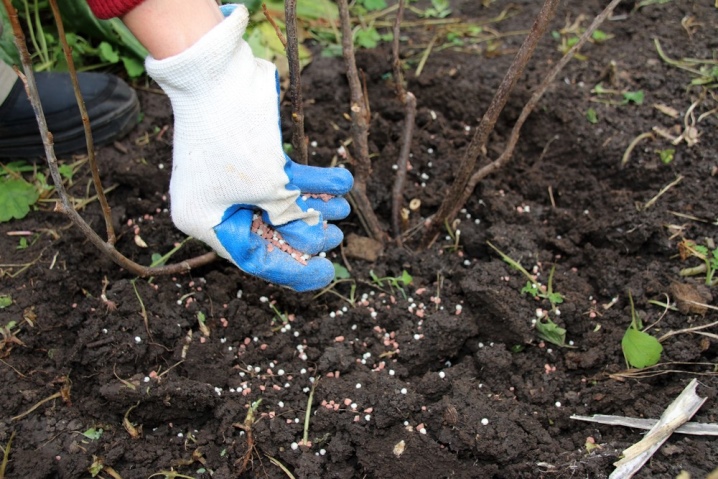
What other fertilizers can be applied.
- Wood ash (potash top dressing). It will be more effective if you make a solution based on it, for 5 liters of liquid - 50 g of ash. You can also make an infusion: pour ash on a third of the bucket, which is poured with hot water. This mixture should be infused for 3 days.
- Potassium sulfate or potassium sulfate is also considered an excellent option for autumn feeding. Magnesium, sulfur, calcium are also present in this fertilizer.
- Ammophos. It is, in principle, brought in more often in the summer, in August. But September feeding is not excluded. The fertilizer contains 12% nitrogen, in 10 liters you need to dilute 30-40 g.
- Double superphosphate. You can fertilize the bush with such a means in granules, they contain a lot of monocalcium phosphate. In 10 liters of water, 15 g of granules must be diluted.
- Fertilizer "Autumn". There is phosphorus and potassium, some nitrogen, additional trace elements. The granules do not even have to be diluted in water.You can simply scatter them around the trunk circle or dig into the formed groove.
- Potato peelings. They contain magnesium and potassium salts, as well as calcium with phosphorus. But more importantly, there is starch in it, it helps to form a large and tasty harvest. Potato skins are used as top dressing. But not fresh, but dried. Dug in fresh can grow, which is completely unnecessary.
By the way, potato peel is also an excellent mulch, which is also included in the complex of pre-winter currant preparation.
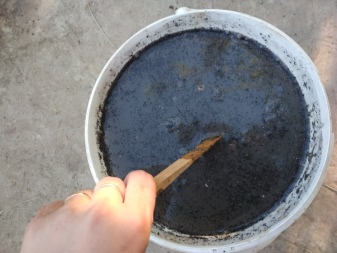
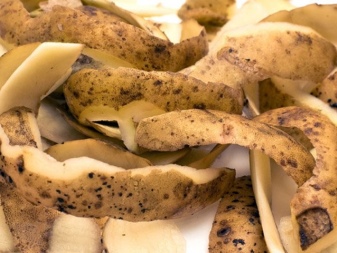
Pruning
Pruning is considered a standard procedure, and it consists in removing dry and damaged branches, as well as those that too thicken the bush. In a word, all unnecessary is removed. The same pruning can be easily combined with the formation of a bush. Such a measure will affect the increase in yield in the next season, that is, the formation of a bush is not at all superfluous. The productive age of the currant is also extended.
When to trim it depends on the type of plant. If black currants are cut in mid-October and until the end of the month, then red (and white, by the way, too) - at the end of October. They just have a dormant period later.
Pruning should only be done with a clean and sharpened garden tool, pruner, or garden knife. If the shoots are very thick, you will need a garden saw. Weak and thin branches are removed first, then old ones. Then the shoots growing along the crown are removed, they do not participate in the yield, but only aimlessly thicken the bush.
If the entire branch is removed, it must be trimmed almost at the bud itself. You do not need to save the stump. Passing from one sample to another, it is necessary to disinfect the blade with something alcoholic.

Treatment against diseases and pests
After pruning, when it is already closer to the cold, the plant needs treatment from diseases and pests. If the shrub grows in a warm region, the pests calmly winter for themselves on the plants, therefore the treatment must be careful. It is impossible to process before the foliage falls off. It should wither, turn yellow and dry out. After the leaves fall off, the nutrients will be directed to the shoots and buds, which is better for saving currant energy.
How can a bush be treated in the fall:
- Bordeaux liquid - it spreads not only to the bushes, but also to the soil nearby;
- urea solution - well deal with pests and some diseases;
- 2% copper sulfate - only for the soil around the bush;
- "Fundazol", "Topaz", "Vectroy" - fungicides are used strictly according to the instructions;
- insecticides "Neoron", "Aliot", "Karbofos".
These are the most effective tools, time-tested samples.
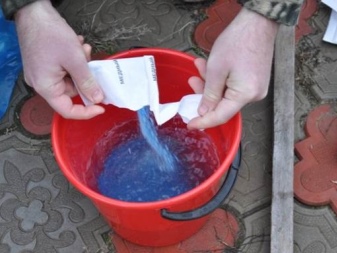
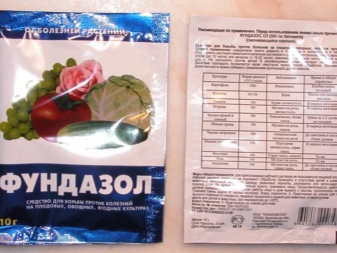
Helpful hints
Newbie gardeners often suffer from a lack of trivial advice, they may not take into account simple points. This is normal, but it will not be superfluous to gain knowledge.
Tips for autumn care for red currants:
- if it is decided to bend the shoots to the ground, then this must be done very delicately and before the onset of frost (as soon as the latter begin, the shoots will already lose flexibility);
- if the winter promises to be harsh, the plant needs to be insured - use a dense, air-tight material (the film will not work, but the mineral wool is good);
- in winter, you should look at the state of affairs on the site, if there is little snow on the bush, it must be raked from the territory;
- so that the air can always flow to the bush, in the fall, crossed pegs are stuck into the ground;
- if a dangerous snow crust forms on the bush, it is sprinkled with a dark substrate (the same ash), it will attract the sun's rays and the flooring will melt.
In a word, although it is minimal, you will have to take care of the bush in winter.
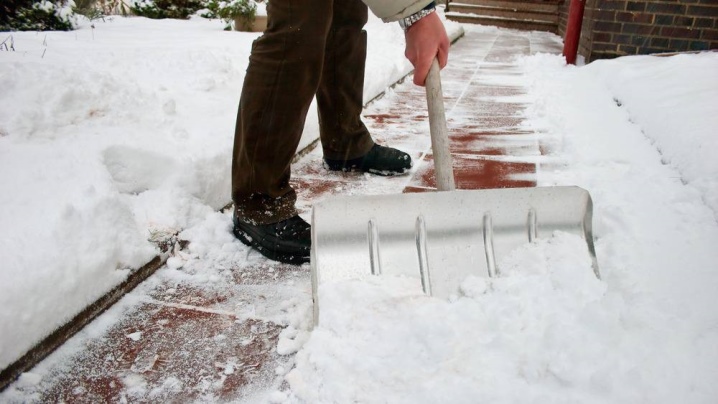
Common mistakes
- Fresh manure is the most popular mistake in autumn feeding currants. This should not be allowed, because growth processes are activated, and the plant will suffer greatly in winter (and may even die).
- Another mistake is common for beginners: they tilt the shoots too much to the ground, those are fixed on it, but break, and in the spring they simply dry up. The plant dies.
- It is also a mistake to leave the hemp when pruning the shrub. This is dangerous because the bush will become attractive to the glass - a very dangerous pest. This is also fraught with the death of red currants.
- Finally, among the top mistakes will be mulching with fallen leaves. There, in the leaves, pests can lurk. They will overwinter in plant debris, and in the spring they will get down to business.
If you prepare not only the means, tools, but also your own knowledge (bring them into the system), after the autumn the currants will calmly endure the winter and in the spring, healthy and active, they will begin a new stage of growth and fruiting.
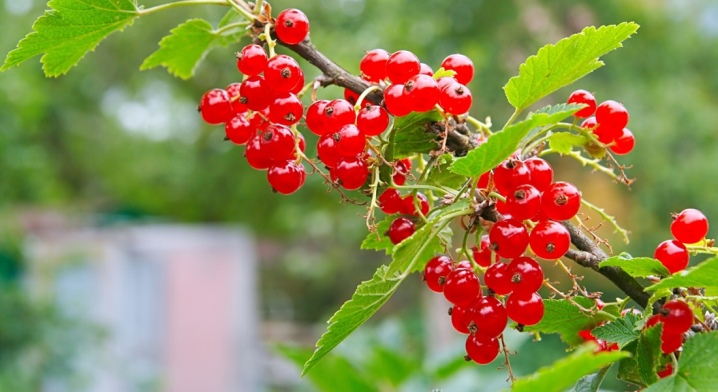













The comment was sent successfully.